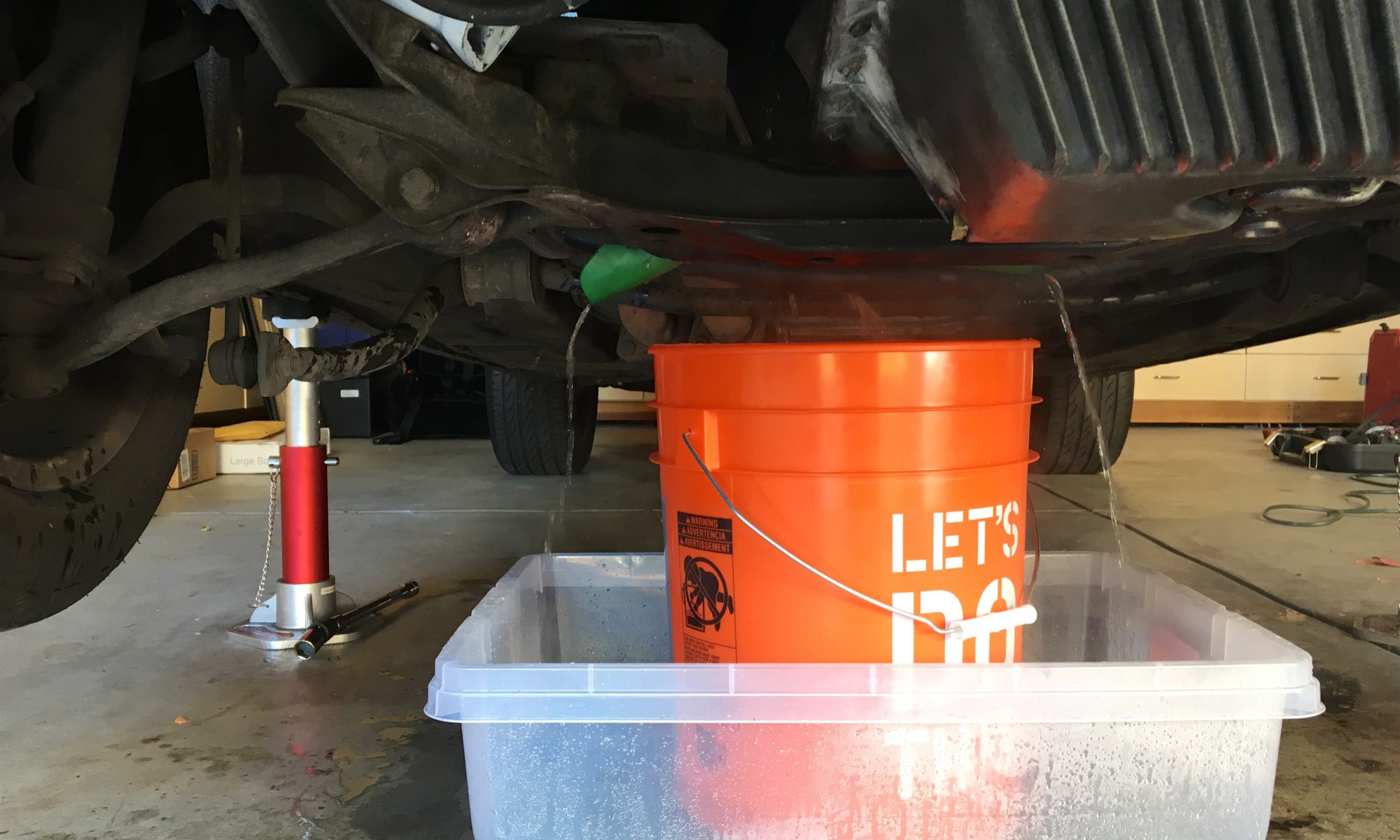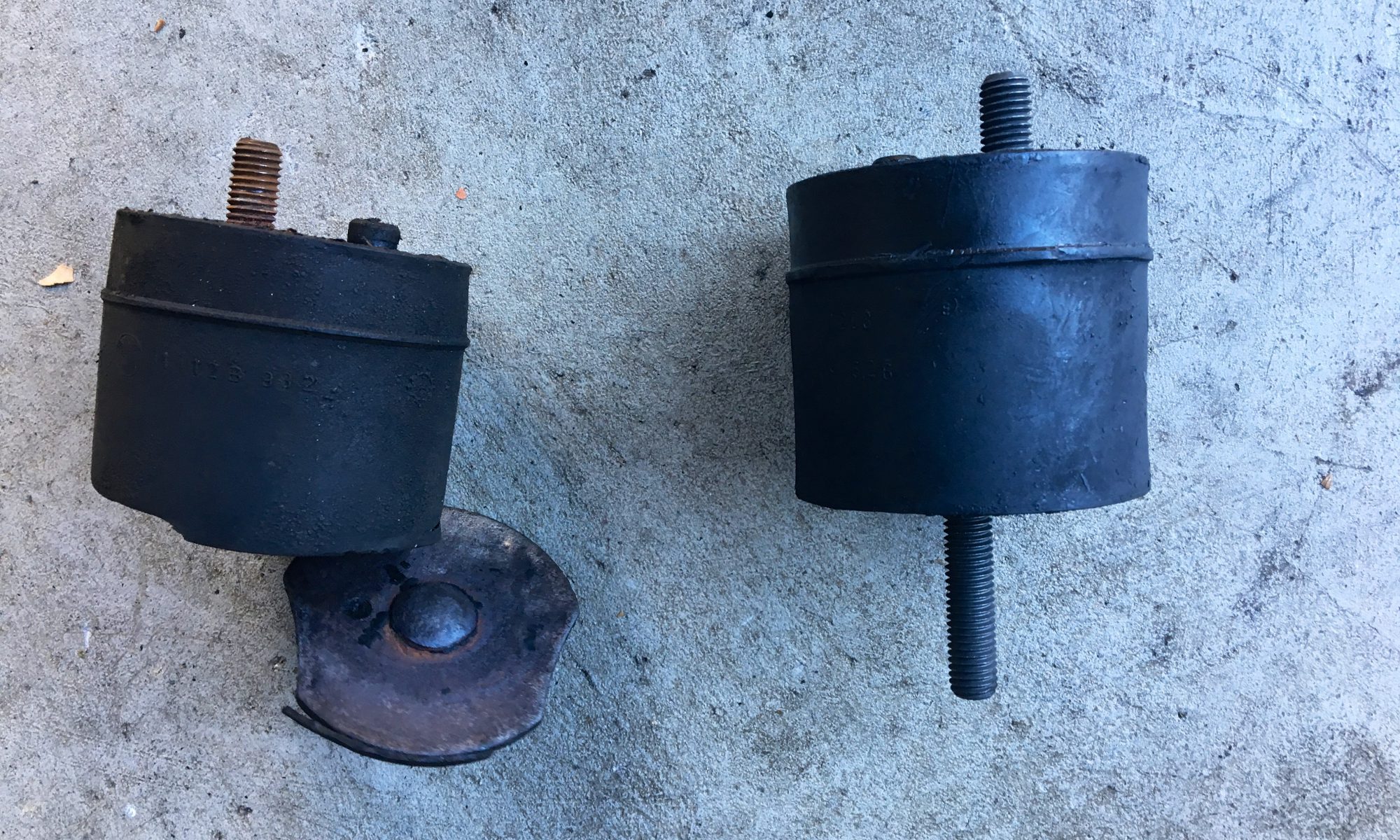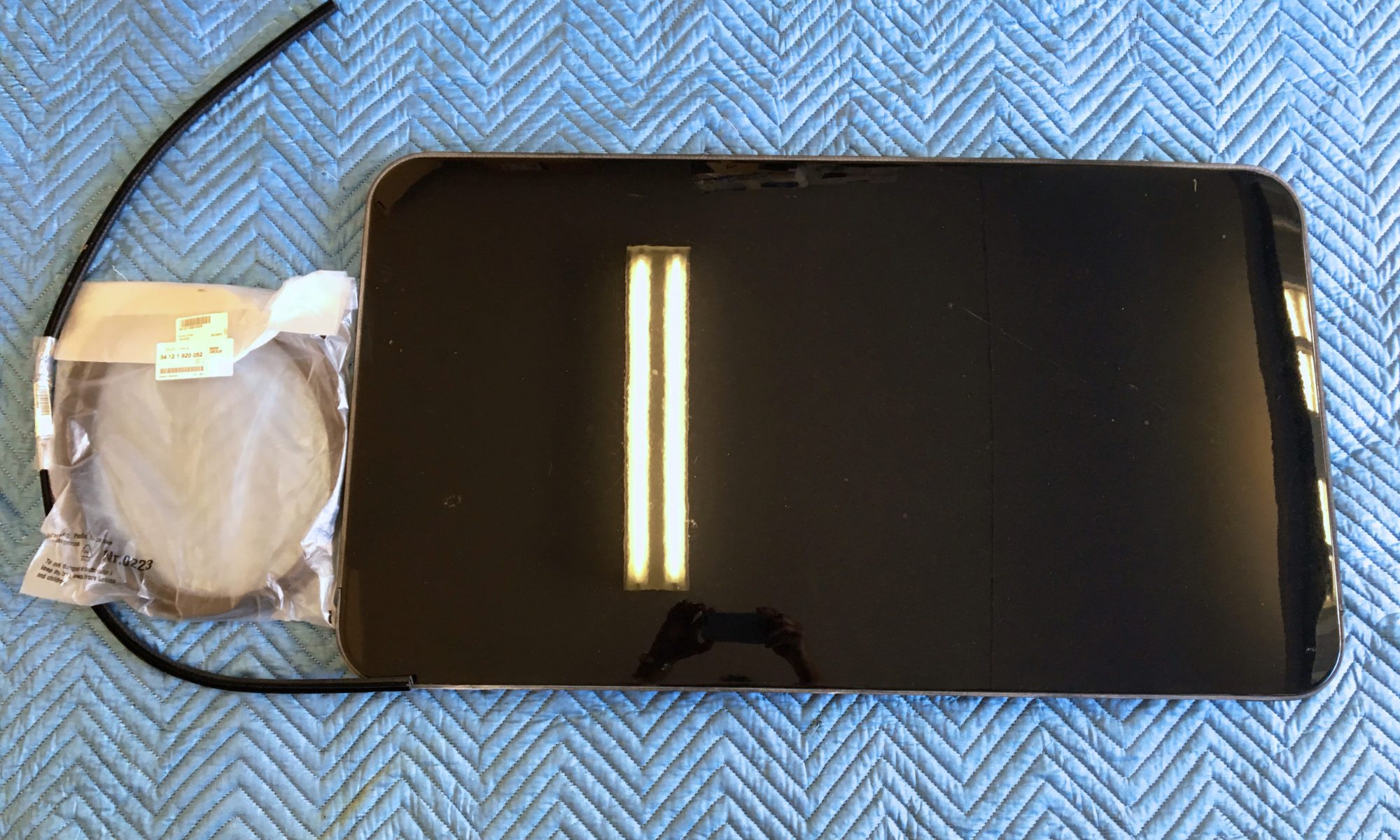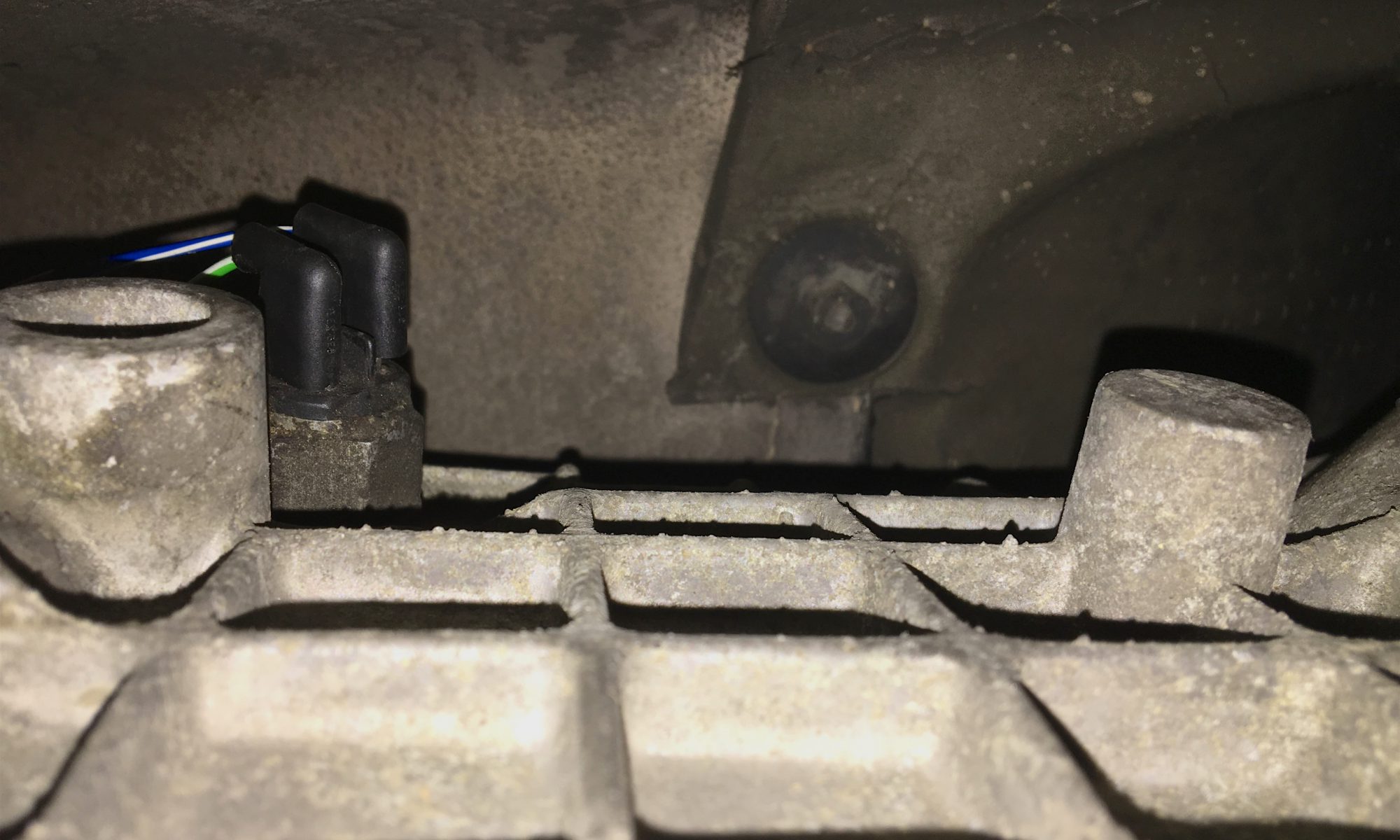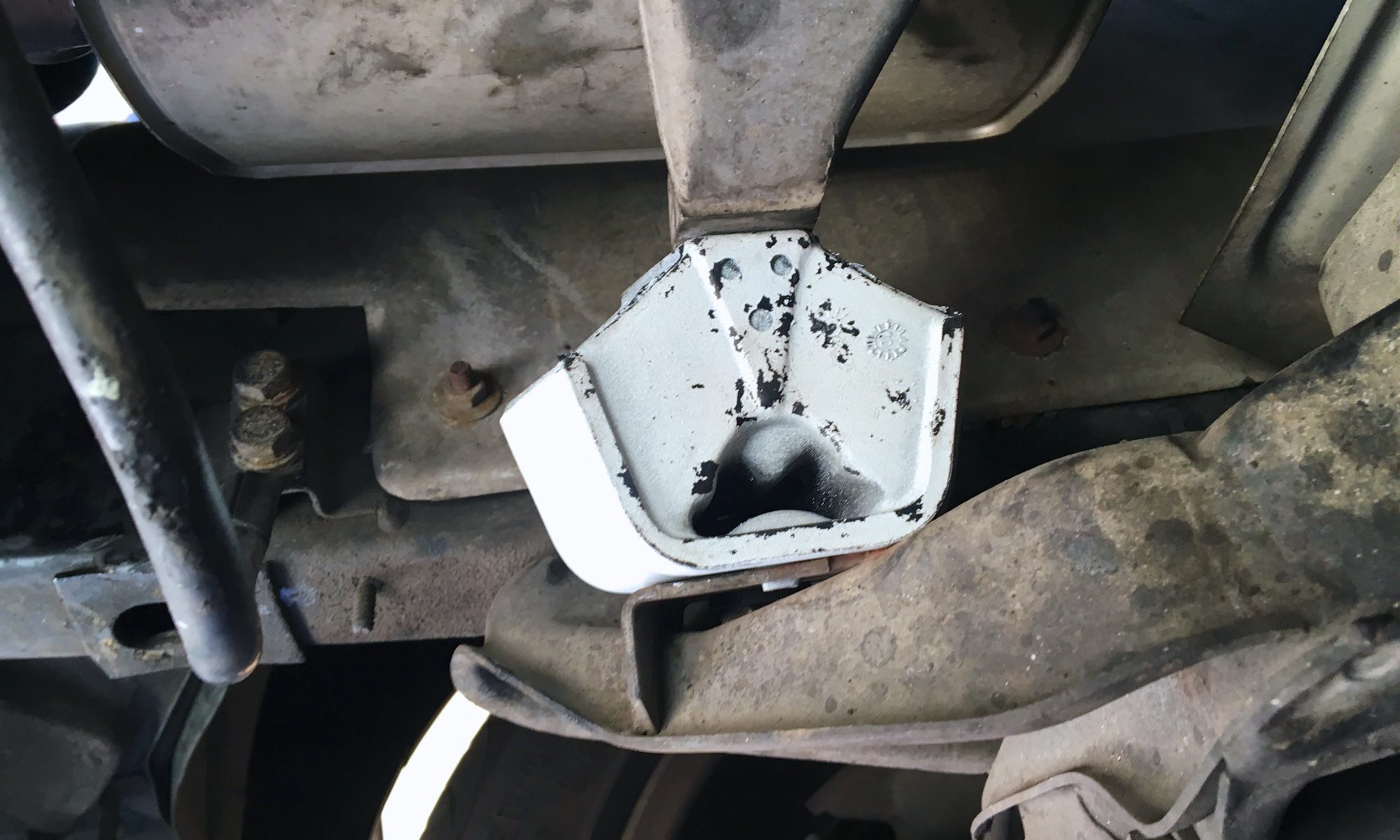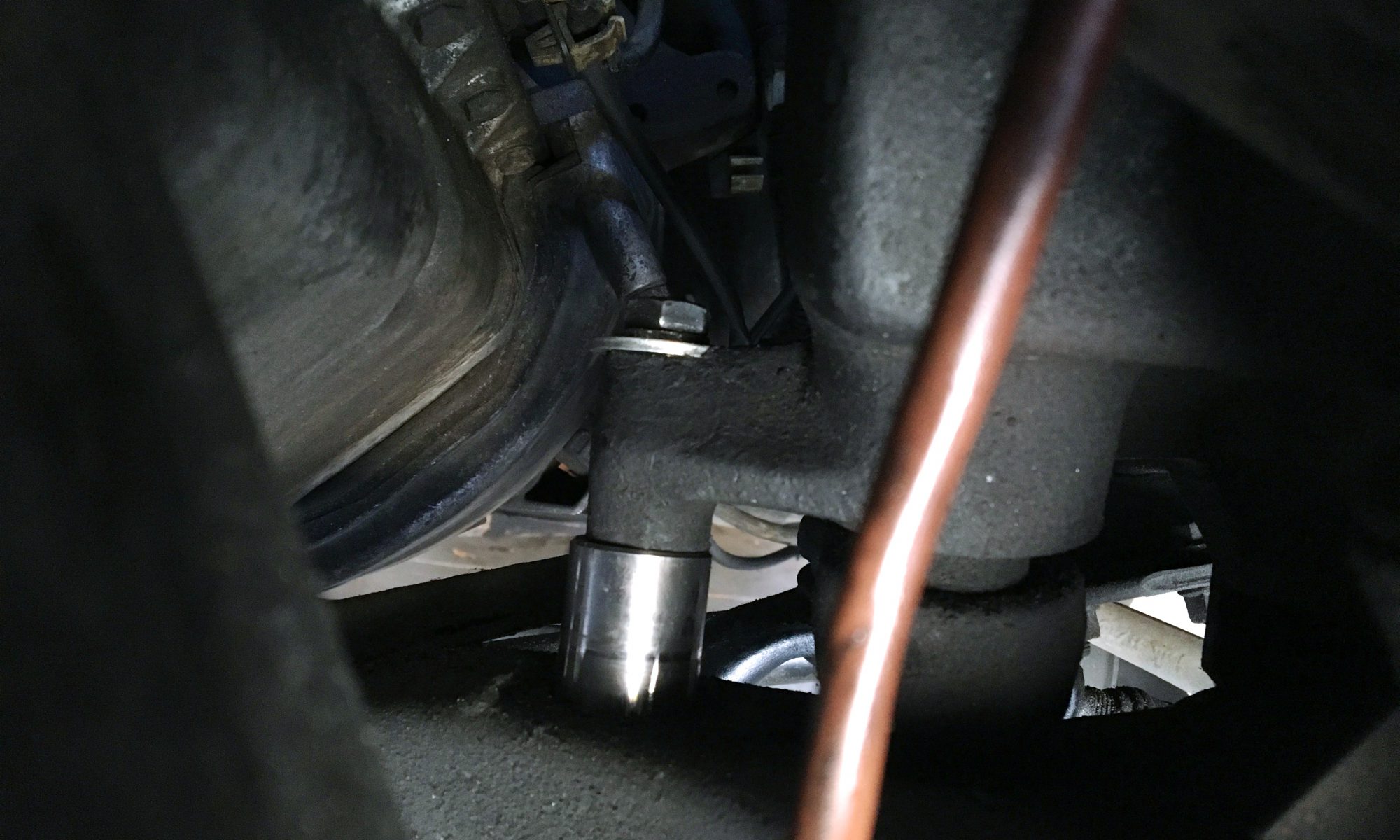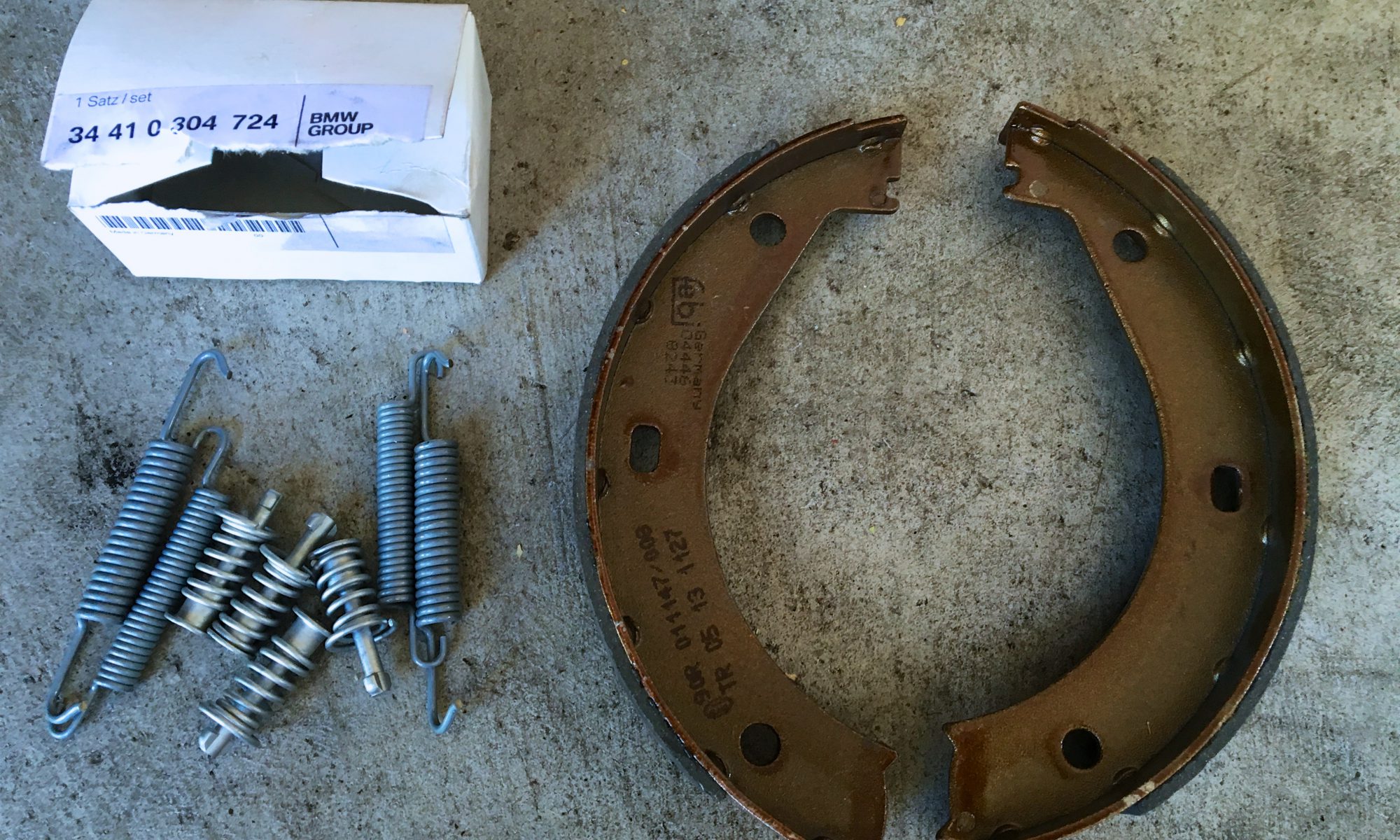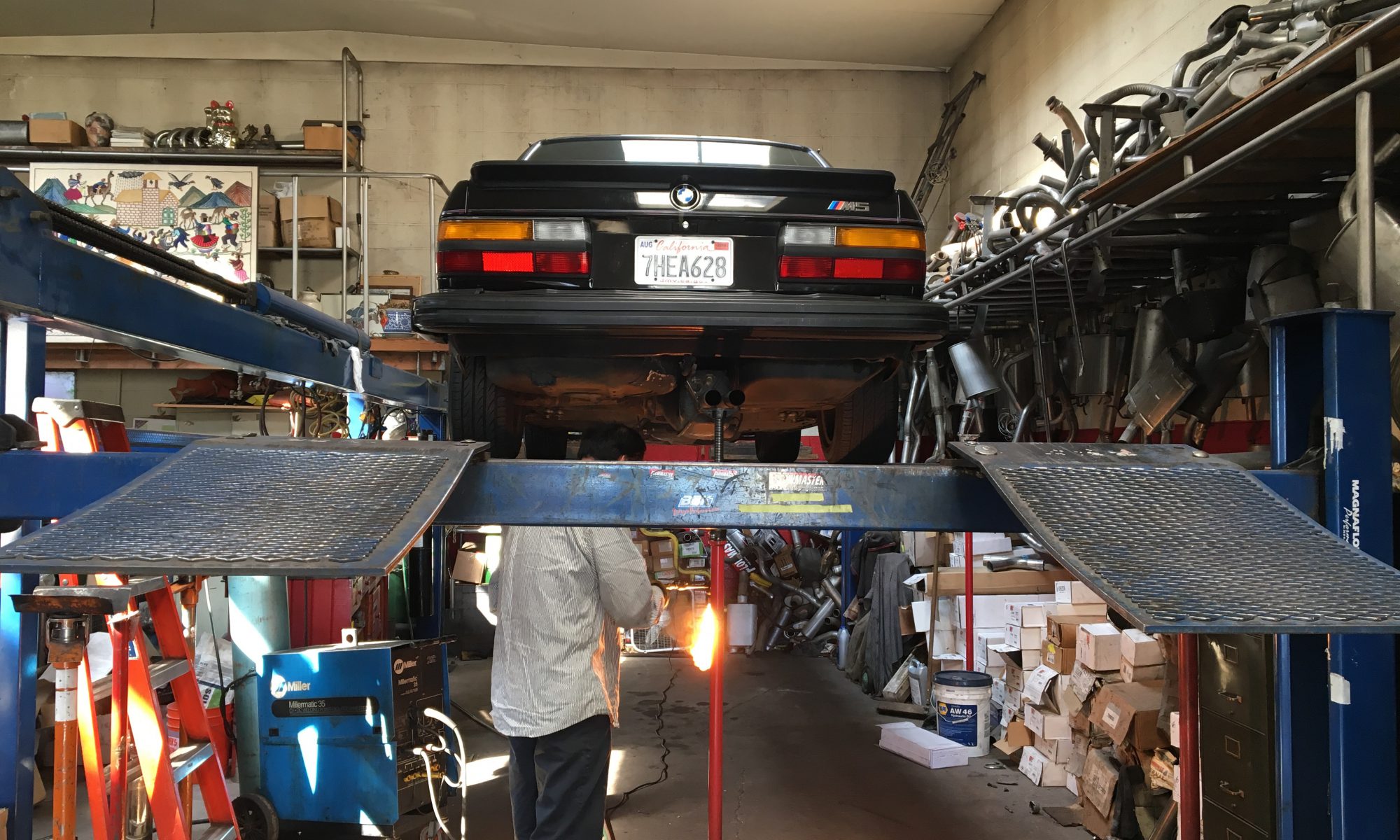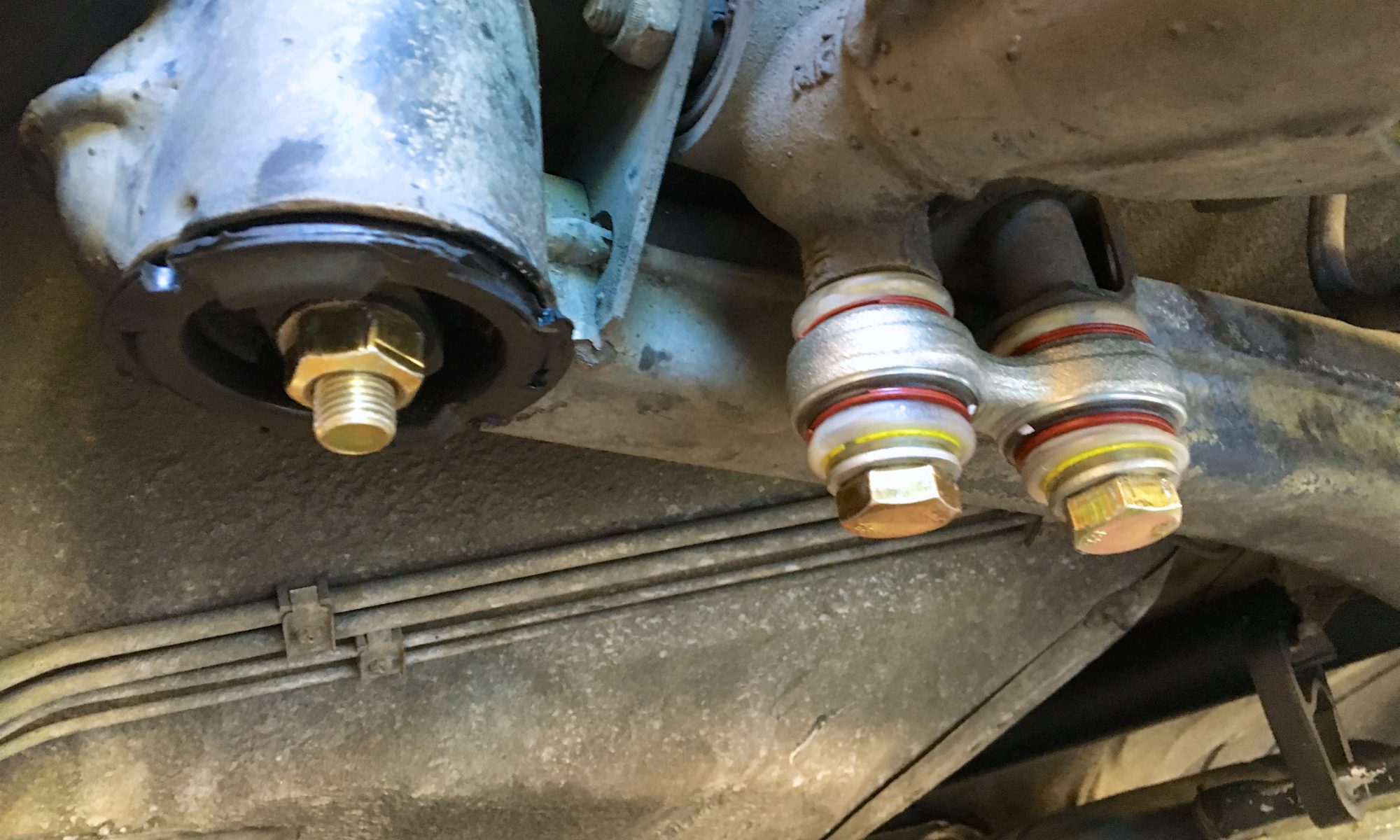Even though I fixed the driveline shudder, there was still a very pronounced “clunk” coming from the rear end. This is a common problem and easily diagnosed as failed rear subframe bushings. I read a lot about what a PITA job this is, not only to get the old bushings out (101 ways, including a sawzall), but also to get the new bushings in.
I ordered new Lemforder subframe bushings and Pitman arms (dogbones) as well as new pins and nuts. I also had to borrow a special tool, which is used to remove and install the subframe bushings. The first step was to put my new bushings on ice to make them easier to install.
It didn’t take long during the removal step to realize the both old bushings were destroyed, with the inner part completely separated with the outer part, thus rendering them completely ineffective. I still needed to use the BMW Sir Tools 3026, which is no longer available, to remove the old bushings, which are pressed into the subframe and likely bonded to it after all these years. With the proper tool, they pressed right out.
The new Pitman arms were a lot easier to remove and replace. I was also very happy to have my new Milwaukee M18 impact wrench, which made quick work of spinning off the old nuts. The new ones sure looked a lot nicer than the old ones, which were very clearly worn.
After removing the subframe bushings from the freezer and spraying them down with water and a drop of dish soap, they actually pressed in pretty easily. I kept tightening the nut on the tool to try to get the bottom of the bushing to press all the way into the subframe. Despite not getting quite there, I ended up crushing the thrust bearing, which was actually kind of scary as the bearings flew out in many directions (eye protection!). The took came with a replacement bearing, so I was able to also complete the other side. What I realized was that the bushing is slightly taller than the subframe, so when it gets pressed into subframe all the way, it is then getting compressed within the tool versus going in any further. I didn’t try it, but it seems that using the cup that is used for removing the bushing instead of the flat plat designed to accept only the bushing “ears,” would allow the bushing to be pressed further into the subframe and then let the bottom be pressed in to the ridge of the bushing.
In the end, I had to source some real thrust bearings that matched the size and specifications of the original ones, as I didn’t want the owner of the tool to be stuck with a hobbled tool.
This repair completely eliminated the rear-end “clunk” and tightened up the handling considerably.
